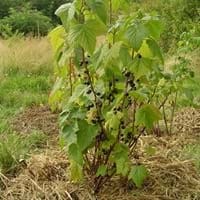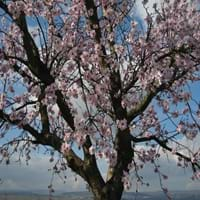Life Span
Perennial
Perennial
Origin
Europe, Central Asia, Western Asia
Northern Africa, Western Asia
Types
Not Available
Bitter Almonds, Chinese Almonds, Green Almonds
Habitat
Fertile bottom land, Temperate Regions
Dappled Shade, Sunny Edge, Woodland Garden Secondary
USDA Hardiness Zone
Not Available
5-8
Sunset Zone
Not Available
2b, 3b, 8, 9, 10, 12, 13, 14, 15, 16, 19, 20, 21
Habit
Upright/Erect
Oval or Rounded
Flower Color
Green, Purple
White, Light Pink
Flower Color Modifier
Bicolor
Bicolor
Fruit Color
Purple, Black
Green
Leaf Color in Spring
Green
Light Green
Leaf Color in Summer
Green
Light Green
Leaf Color in Fall
Green
Light Green, Yellow green
Leaf Color in Winter
Light Green
Light Green
Leaf Shape
Palmately Lobed
Egg-shaped
Plant Season
Spring, Summer, Fall
Spring, Fall
Sunlight
Full Sun, Partial Sun, Partial shade
Full Sun
Growth Rate
Medium
Medium
Type of Soil
Loam
Loam, Sand
The pH of Soil
Acidic, Neutral, Alkaline
Neutral
Soil Drainage
Well drained
Well drained
Bloom Time
Spring
Early Spring, Spring, Late Winter
Tolerances
Drought
Drought
Where to Plant?
Container, Ground, Pot
Container
How to Plant?
Seedlings, Stem Cutting
Budding, Grafting
Plant Maintenance
Medium
Medium
Watering Requirements
Keep the ground moist but not water-logged
Do Not over Water, Water Deeply
In Summer
Lots of watering
Lots of watering
In Spring
Moderate
Moderate
In Winter
Average Water
Average Water
Soil pH
Acidic, Neutral, Alkaline
Neutral
Soil Type
Loam
Loam, Sand
Soil Drainage Capacity
Well drained
Well drained
Sun Exposure
Full Sun, Partial Sun, Partial shade
Full Sun
Pruning
Remove damaged leaves, Remove dead branches, Remove dead leaves
Heading cuts, Remove damaged leaves, Remove dead branches, Remove dead leaves, Thinning
Fertilizers
10-10-10 diluted liquid fertilizer
Apply 12-12-12 amounts
Pests and Diseases
Aphids, Earwigs, Insects, Mildew, Red blotch, Rust, sawflies
Almond brownline and decline, Almond kernel shrivel, Alternaria Leaf Spot, Hull rot
Plant Tolerance
Cold climate
Drought
Flowers
Insignificant
Showy
Flower Petal Number
Single
Not Available
Foliage Texture
Medium
Medium
Foliage Sheen
Matte
Matte
Allergy
Asthma, Eczema, Food Allergy, Hives
Diarrhea, Mild Allergen, Nausea, Swelling in mouth
Aesthetic Uses
Not Used For Aesthetic Purpose
Beautification
Beauty Benefits
Not Available
Acne, Blackheads, Good for skin, Moisturizing, Prevents greying of hair
Environmental Uses
Air purification
Air purification
Medicinal Uses
Potassium, Rich in Iron, Vitamin B, Vitamin C
Antiemetic, Antitumor, Emollient, Nutritive, Pectoral
Part of Plant Used
Fruits, Leaves, Seeds
Seeds, Stem
Other Uses
Traditional medicine, Used as a nutritious food item, Used As Food, Used for its medicinal properties
Blended with water to make almond milk, Oil is used for aromatherapy, Used for making dark grey to green dye, Used for producing cooking oil
Used As Indoor Plant
Yes
No
Used As Outdoor Plant
Yes
Yes
Garden Design
Edible, Fruit / Fruit Tree, Hedges, Mixed Border
Edible, Fruit / Fruit Tree
Botanical Name
RIBES nigrum
PRUNUS dulcis
Common Name
Black Currant
Almond, Sweet Almond
In Hindi
Black Currant
मीठा बादाम
In German
Black Currant
Süße Mandel
In French
groseille noire
Amande douce
In Spanish
negro Grosella
Almendra dulce
In Greek
μαύρη σταφίδα
Sweet Almond
In Portuguese
groselha-preta
Amêndoas doces
In Polish
czarna porzeczka
słodkich migdałów
In Latin
nigrum currants
Almond Pulchra
Phylum
Magnoliophyta
Magnoliophyta
Class
Magnoliopsida
Magnoliopsida
Family
Grossulariaceae
Rosaceae
Clade
Angiosperms, Core eudicots, Eudicots
Angiosperms, Eudicots, Rosids
Tribe
Not Available
Amygdaleae
Subfamily
Not Available
Amygdaloideae
Number of Species
Not Available
Not Available
Properties of Black Currant and Sweet Almond
Wondering what are the properties of Black Currant and Sweet Almond? We provide you with everything About Black Currant and Sweet Almond. Black Currant has thorns and Sweet Almond doesn't have thorns. Also Black Currant does not have fragrant flowers. Black Currant has allergic reactions like Asthma, Eczema, Food Allergy and Hives and Sweet Almond has allergic reactions like Asthma, Eczema, Food Allergy and Hives. Compare all the properties and characteristics of these two plants. Find out which of these plant can be used as indoor plant. If you are interested to decorate your house and garden, find out aesthetic uses, compare them and select the plant which will beautify your surrounding. Along with beautification, try comparing medicinal and edible uses of Black Currant and Sweet Almond and you can choose the plant having best and most benefits.
Season and Care of Black Currant and Sweet Almond
Season and care of Black Currant and Sweet Almond is important to know. While considering everything about Black Currant and Sweet Almond Care, growing season is an essential factor. Black Currant season is Spring, Summer and Fall and Sweet Almond season is Spring, Summer and Fall. The type of soil for Black Currant is Loam and for Sweet Almond is Loam, Sand while the PH of soil for Black Currant is Acidic, Neutral, Alkaline and for Sweet Almond is Neutral.
Black Currant and Sweet Almond Physical Information
Black Currant and Sweet Almond physical information is very important for comparison. Black Currant height is 120.00 cm and width 120.00 cm whereas Sweet Almond height is 760.00 cm and width 760.00 cm. The color specification of Black Currant and Sweet Almond are as follows:
Black Currant flower color: Green and Purple
Black Currant leaf color: Green
Sweet Almond flower color: White and Light Pink
- Sweet Almond leaf color: Light Green
Care of Black Currant and Sweet Almond
Care of Black Currant and Sweet Almond include pruning, fertilizers, watering etc. Black Currant pruning is done Remove damaged leaves, Remove dead branches and Remove dead leaves and Sweet Almond pruning is done Heading cuts, Remove damaged leaves, Remove dead branches, Remove dead leaves and Thinning. In summer Black Currant needs Lots of watering and in winter, it needs Average Water. Whereas, in summer Sweet Almond needs Lots of watering and in winter, it needs Average Water.





